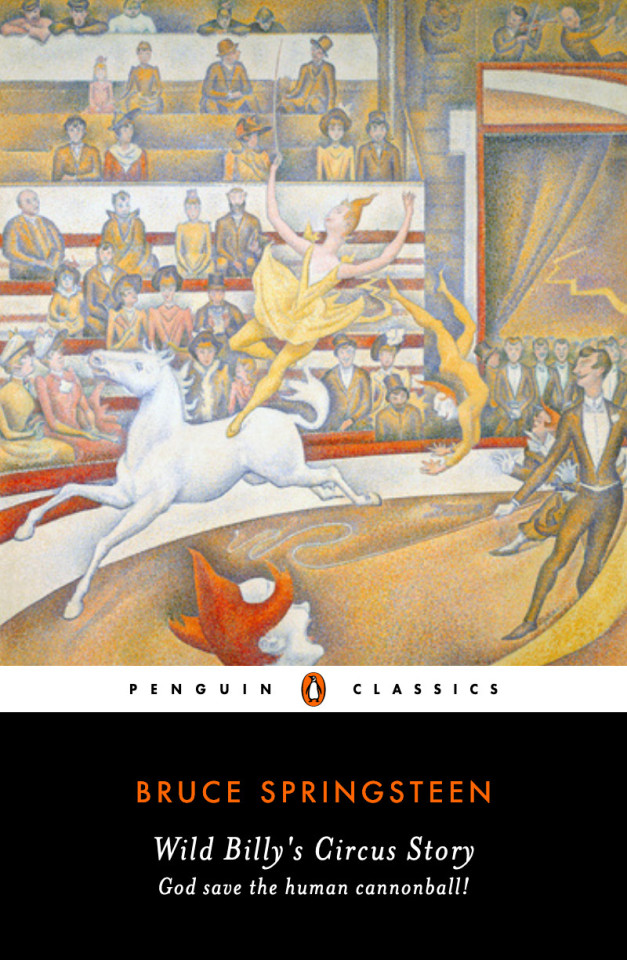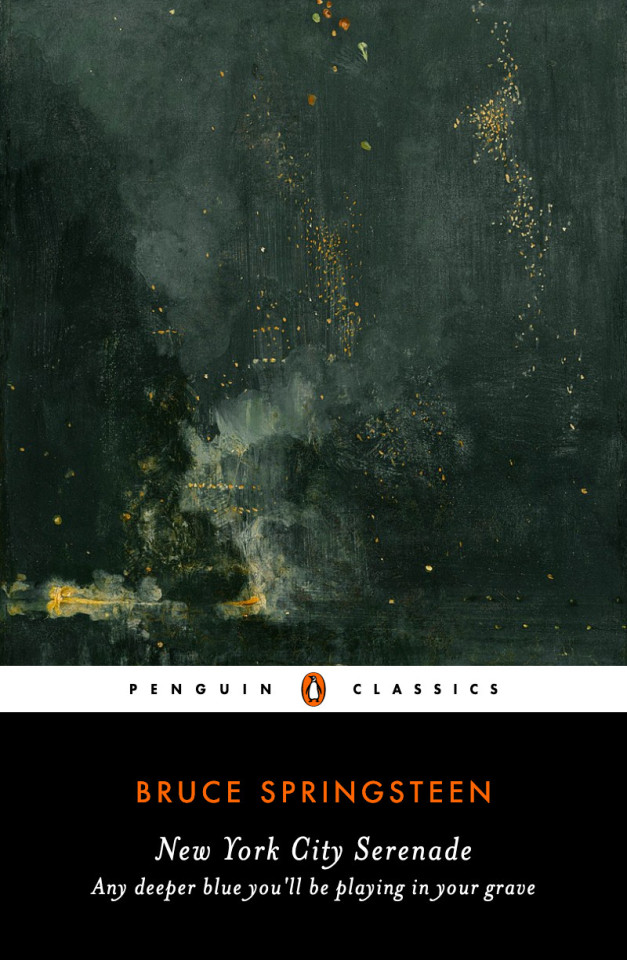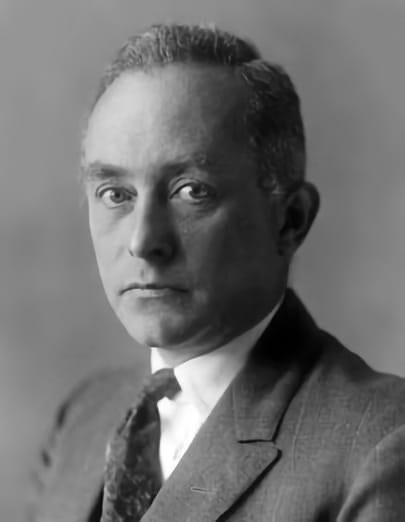#weisskopf
Explore tagged Tumblr posts
Text
Bethe was also one of the twelve American physicists* who challenged President Truman's decision in a statement dated 4 February 1950:
We believe that no nation has the right to use such a bomb, no matter how righteous its cause. This bomb is no longer a weapon of war but a means of extermination of whole populations. Its use would be a betrayal of all standards of morality and of Christian civilization itself . . . to create such an ever-present peril for all the nations of the world is against the vital interests of both Russia and the United States . . . we urge that the United States, through its elected government, make a solemn declaration that we shall never use this bomb first. The circumstance which might force us to use it would be if we or our allies were attacked by this bomb. There can be only one justification for our development of the hydrogen bomb and that is to prevent its use.
* S. K. Allison, K. T. Bainbridge, H. S. Bethe, R. B. Brode, C. C. Lauritsen, F. W. Loomis, G. B. Pegram, B. Rossi, F. Seitz, M. A. Tube, V. F. Weisskopf, and M. G. White.
"Brighter than a Thousand Suns: A Personal History of the Atomic Scientists" - Robert Jungk, translated by James Cleugh
#book quotes#brighter than a thousand suns#robert jungk#james cleugh#nonfiction#hans bethe#samuel k allison#kenneth t bainbridge#robert b brode#charles c lauritsen#francis w loomis#george b pegram#bruno rossi#frederick seitz#merle a tuve#victor f weisskopf#milton g white#harry s truman#president truman#february 4#50s#1950s#hydrogen bomb#nuclear weapons
0 notes
Text
Israeli soldiers have been leaving Google reviews for places in southern Lebanon that they have invaded, joking about the destruction they have caused.
“No mosque, only rubble and a blocked tunnel entrance. I went for nothing. Do not recommend,” Gabi Weisskopf wrote about the Ahel al-Quran Mosque near the town of Yarine.
Another review, posted by Elad Biton, bragged about allegedly burning down Mays al-Jabal’s public hospital.
“Just disappointing, it said that it opens in the morning, we arrived and it was closed! Gall!” Biton said. “Really bad service. There are no good conditions for staying. But other than that, there was (a lot) [of fire].”
390 notes
·
View notes
Text

The heart of Crab Nebula
At the center of the Crab Nebula lies a pulsar, known as the Crab Pulsar (PSR B0531+21), which is a highly magnetized, rotating neutron star.
This pulsar emits beams of electromagnetic radiation, including radio waves, visible light, and X-rays, and is responsible for the nebula's energetic emissions.
The Crab Pulsar rotates approximately 30 times per second and is surrounded by a complex structure of gas and dust that was expelled during the supernova event.
Credits: NASA and ESA Acknowledgment: J. Hester (ASU) and M. Weisskopf (NASA/MSFC)
#space#stars#nebula#nasa#cosmos#constellations#astronomy#aesthetic#galaxy#space exploration#universe#outer space#astrophotography
227 notes
·
View notes
Note
Hii, I was wondering, in response to your tag on the rate of neurodivergence post, how did you test for the effects of pollution on rates of neurodivergence? Is there a paper you would recommend reading? (Entirely out of interest)
So specifically for my PhD I looked at air pollution exposure during pregnancy as a risk factor for autism, and as part of the background for this project I had to be pretty familiar with the epidemiological literature on this subject. This was over 10 years ago now (lolsob), but even then it was apparent that areas with higher rates of what we call particulate matter air pollution had concurrent increased rates of autism (among other things including ADHD, schizophrenia, and Alzheimer's).
At that stage, there were few animal and cell models to substantiate what the epi literature was seeing. Nowadays tho there's many groups looking at this and the animal and cell models by and large corroborate the association in the epi literature (that is, we're moving away from simple correlation to increasing plausibility/causation).
Since particulate matter is a complex mixture of many individual pollutants, the research these days is now focusing on whether it's any of these individual specific components that are driving the changes in brain development (for example, metals, gases, etc.). So far no consensus, but overall the literature agrees that air pollution and particulate matter are indeed risk factors for atypical brain development. Brain development that's happening during pregnancy is (like many other organ systems) more vulnerable to external factors than it would be during later life stages. It's also hypothesized (and supported by a few studies) that pollutants may interact with autism risk genes to result in enhanced risk.
An important note is that pollution exposures often intersect with other risk factors, such as race and socioeconomic status, which in many places can determine where you live (and thus, what you're exposed to).
This is a very simple overview, but I encourage you to check out the following open-access reviews if you're interested to know more:
Costa 2021
Weisskopf 2016
Allen 2018
30 notes
·
View notes
Text

Alwine Weisskopf, Consort of Anashra - Shadar-Kai death cleric for a campaign my roommate is running. Was nice to be drawing D&D stuff again!
66 notes
·
View notes
Text








Bruce Springsteen's second album THE WILD THE INNOCENT & THE E STREET SHUFFLE as Penguin Classics (series): Jacob Lawrence / Pierre-Auguste Renoir / Roy Lichtenstein / Georges Seurat / Marc Chagall / Hans Makart / James Whistler / Roland Weisskopf
#i did another one lol#bruce springsteen#the wild the innocent and the e street shuffle#music edits#this is one of my absolute favorite albums it just fills me with such JOY <3#stuck a random band photo from the back of the album in this one to even out the numbers#bruce springsteen penguin classics#<- gonna make it a series! send album requests 😘
72 notes
·
View notes
Text
The Marshall Star for January 24 2024
NASA’s IXPE Team Awarded Prestigious Rossi Prize By Rick Smith NASA’s IXPE (Imaging X-ray Polarimetry Explorer) team has been awarded a top prize in high-energy astronomy. The High Energy Astrophysics Division of the American Astronomical Society (AAS) has awarded the 2024 Bruno Rossi Prize to retired NASA astrophysicist Martin Weisskopf, Italian Space Agency principal investigator […] from NASA https://ift.tt/iazQOWA
3 notes
·
View notes
Text

Max Born was born in Breslau #OnThisDay the 11th December, 1882, to Professor Gustav Born, anatomist and embryologist, and his wife Margarete, née Kauffmann, who was a member of a Silesian family of industrialists.
Max attended the König Wilhelm’s Gymnasium in Breslau and continued his studies at the Universities of Breslau (where the well-known mathematician Rosanes introduced him to matrix calculus), Heidelberg, Zurich (here he was deeply impressed by Hurwitz’s lectures on higher analysis), and Göttingen. In the latter seat of learning he read mathematics chiefly, sitting under Klein, Hilbert, Minkowski, and Runge, but also studied astronomy under Schwarzschild, and physics under Voigt. He was awarded the Prize of the Philosophical Faculty of the University of Göttingen for his work on the stability of elastic wires and tapes in 1906, and graduated at this university a year later on the basis of this work.
Born next went to Cambridge for a short time, to study under Larmor and J.J. Thomson. Back in Breslau during the years 1908-1909, he worked with the physicists Lummer and Pringsheim, and also studied the theory of relativity. On the strength of one of his papers, Minkowski invited his collaboration at Göttingen but soon after his return there, in the winter of 1909, Minkowski died. He had then the task of sifting Minkowski’s literary works in the field of physics and of publishing some uncompleted papers. Soon he became an academic lecturer at Göttingen in recognition of his work on the relativistic electron. He accepted Michelson’s invitation to lecture on relativity in Chicago (1912) and while there he did some experiments with the Michelson grating spectrograph.
An appointment as professor (extraordinarius) to assist Max Planck at Berlin University came to Born in 1915 but he had to join the German Armed Forces. In a scientific office of the army he worked on the theory of sound ranging. He found time also to study the theory of crystals, and published his first book, Dynamik der Kristallgitter (Dynamics of Crystal Lattices), which summarized a series of investigations he had started at Göttingen.
At the conclusion of the First World War, in 1919, Born was appointed Professor at the University of Frankfurt-on-Main, where a laboratory was put at his disposal. His assistant was Otto Stern, and the first of the latter’s well-known experiments, which later were rewarded with a Nobel Prize, originated there.
Max Born went to Göttingen as Professor in 1921, at the same time as James Franck, and he remained there for twelve years, interrupted only by a trip to America in 1925. During these years the Professor’s most important works were created; first a modernized version of his book on crystals, and numerous investigations by him and his pupils on crystal lattices, followed by a series of studies on the quantum theory. Among his collaborators at this time were many physicists, later to become well-known, such as Pauli, Heisenberg, Jordan, Fermi, Dirac, Hund, Hylleraas, Weisskopf, Oppenheimer, Joseph Mayer and Maria Goeppert-Mayer. During the years 1925 and 1926 he published, with Heisenberg and Jordan, investigations on the principles of quantum mechanics (matrix mechanics) and soon after this, his own studies on the statistical interpretation of quantum mechanics.
As were so many other German scientists, he was forced to emigrate in 1933 and was invited to Cambridge, where he taught for three years as Stokes Lecturer. His main sphere of work during this period was in the field of nonlinear electrodynamics, which he developed in collaboration with Infeld.
During the winter of 1935-1936 Born spent six months in Bangalore at the Indian Institute of Science, where he worked with Sir C.V. Raman and his pupils. In 1936 he was appointed Tait Professor of Natural Philosophy in Edinburgh, where he worked until his retirement in 1953. He is now living at the small spa town, Bad Pyrmont.
Max Born has been awarded fellowships of many academies – Göttingen, Moscow, Berlin, Bangalore, Bucharest, Edinburgh, London, Lima, Dublin, Copenhagen, Stockholm, Washington, and Boston, and he has received honorary doctorates from Bristol, Bordeaux, Oxford, Freiburg/Breisgau, Edinburgh, Oslo, Brussels Universities, Humboldt University Berlin, and Technical University Stuttgart. He holds the Stokes Medal of Cambridge, the Max Planck Medaille der Deutschen Physikalischen Gesellschaft (i.e. of the German Physical Society); the Hughes Medal of the Royal Society, London, the Hugo Grotius Medal for International Law, and was also awarded the MacDougall-Brisbane Prize and the Gunning-Victoria Jubilee Prize of the Royal Society, Edinburgh. In 1953 he was made honorary citizen of the town of Göttingen and a year later was granted the Nobel Prize for Physics. He was awarded the Grand Cross of Merit with Star of the Order of Merit of the German Federal Republic in 1959.
The year 1913 saw his marriage to Hedwig, née Ehrenberg, and there are three children of the marriage.
Max Born died on January 5, 1970.
2 notes
·
View notes
Text
youtube
Patty Gurdy - "Melodies Of Hope" (Eurovision Song Contest 2023 Finalist for Germany) To get me to Eurovision, please like and share my TikTok application video! 😍 Link: https://ift.tt/eVlYgUC Listen on Spotify: https://ift.tt/GtkzpVF and on all other Music Platforms ❤️ (Anzeige) Take a look at your Patreon rewards!: https://ift.tt/lKjL8Bm MERCH (Werbung) https://ift.tt/MlzrS6u official Facebook: https://ift.tt/HYbfl7d Fb Fangroup: https://ift.tt/RHUF3NM official Instagram: https://ift.tt/nCBcWfH Website: https://ift.tt/V6AEFu5 Hey Gurdians! Wow, you have written me so many comments about participating in the Eurovision Song Contest, that I finally decided to try it. As an independent artist, this is a very big chance for me. This is my song "Melodies Of Hope", it is a mix of medieval/celtic music and viking-ified minimal EDM. Or as I prefer to call it: Celtic Folk Pop. If you like it, this time it is especially important to share it if you want me to get into the competition. Thank you for all your support over all these years, let's do this together!! Composers & Lyricists: Patty Gurdy & Hannes Braun Music production: Hannes Braun Mastering: Robin Schmidt, 24-96 Mastering Set Design: Elvya Dulcimer & Patty Gurdy, with help from Asad 💚 Camera: Oliver Weisskopf, OliWe Films Cut: Patty Gurdy Thanks to my fans and my bandmates Bodenski and Simon Michael for inspiring me to apply to Eurovision ❤️ business (only!) e-mail: [email protected] #UnserLiedFürLiverpool #hurdygurdy #eurovision Lyrics: My beloved one Can you see what has changed since the fight began had you closer then This is not the end Hold my hand one more time like we used to do, side by side See, the sun is defeating the night I sing my melodies of hope Flowers grow in the barren ground I see them all around Only the wind will know Hear the whispers so far away Dreams of a brighter day Shine bright now, let us shine brighter Shine bright now, love only guides us My melodies of hope fill the sky of the darkest night see how they shine a light See this barren land let‘s rebuild it the way we imagined it Our day has come Don’t you worry now May the wind have your back and the sunlight be warming your day I sing my melodies of hope Flowers grow in the barren ground I see them all around Only the wind will know hear the whispers so far away Dreams of a brighter day Shine bright now, let us shine brighter Shine bright now, love only guides us My melodies of hope fill the sky of the darkest night see how they shine a light My melodies of hope My melodies of hope My beloved one I can finally see with my heart again let us begin I sing my melodies of hope Flowers grow in the barren ground I see them all around On with the wind we go Can you take us so far away Greeting a better day Shine bright now let us shine brighter Shine bright now love only guides us My melodies of hope fill the sky of the darkest night see how they shine a light Heya Heyo My melodies of hope via YouTube https://www.youtube.com/watch?v=BX5XzmOGKVI
2 notes
·
View notes
Text
[T]here are three main avenues on which one arrives at meaning in life. The first is by creating a work or by doing a deed. The second is by experiencing something or encountering someone; in other words, meaning can be found not only in work but also in love. Edith Weisskopf-Joelson observed in this context that the logotherapeutic “notion that experiencing can be as valuable as achieving is therapeutic because it compensates for our one-sided emphasis on the external world of achievement at the expense of the internal world of experience.”
Most important, however, is the third avenue to meaning in life: even the helpless victim of a hopeless situation, facing a fate he cannot change, may rise above himself, may grow beyond himself, and by so doing change himself. Again it was Edith Weisskopf-Joelson, who, as mentioned on p. 107, once expressed the hope that logotherapy “may help counteract certain unhealthy trends in the present day culture of the United States, where the incurable sufferer is given very little opportunity to be proud of his suffering and to consider it ennobling rather than degrading” so that “he is not only unhappy, but also ashamed of being unhappy.”
If, on the other hand, one cannot change a situation that causes his suffering, he can still choose his attitude. - Viktor Frankl, Man’s Search for Meaning (via madness-narrative)
2 notes
·
View notes
Text
Let's name some names from the 2015 Hall of Shame: Larry Correia, Brad R. Torgersen, Wright (who BTW is a lawyer), Vox Day (Theodore Robert Beale, who frankly is a Nazi), Toni Weisskopf (who seems able to win awards only in the Deep South), and Sarah A. Hoyt (most of whose awards seem to come from rabid libertardian outfits).

75K notes
·
View notes
Text
Not until Weisskopf had sent him a telegram of a hundred and fifty words, emphasizing the seriousness of the matter, did he reply from Paris, at last, by cable:
RECEIVED LETTER SZILARD BUT NOT CABLE PROMISED STOP PROPOSITION OF 31 MARCH VERY REASONABLE BUT COMES TOO LATE STOP HAVE LEARNED LAST WEEK THAT SCIENCE SERVICE HAD INFORMED AMERICAN PRESS FEBRUARY ABOUT ROBERTS WORK STOP LETTER FOLLOWED JOLIOT HALBAN KOWARSKI.
"Brighter than a Thousand Suns: A Personal History of the Atomic Scientists" - Robert Jungk, translated by James Cleugh
#book quotes#brighter than a thousand suns#robert jungk#james cleugh#nonfiction#telegram#victor f weisskopf#paris#cable#letter#leo szilard#proposition#march 31#31 march#reasonable#too late#science service#american press#roberts#frederic joliot curie#hans von halban#lew kowarski
0 notes
Link
0 notes
Link
Washington DC (UPI) Jan 23, 2024 The Imaging X-ray Polarimetry Explorer team at NASA has been awarded a prestigious prize in the field of high-energy astronomy. Along with their teams, retired NASA astrophysicist Martin Weisskopf and Italian Space Agency principal investigator Paolo Soffitta were awarded the 2024 Bruno Rossi Prize by the High Energy Astrophysics Division of the American Astronomical Society for IXPE's
0 notes
Text
Il premio Bruno Rossi 2024 alla missione Ixpe di Nasa-Asi
Il prestigioso premio internazionale intitolato all’astrofisico italiano Bruno Rossi, assegnato dalla Divisione di astrofisica delle alte energie dell’American Astronomical Society, è stato conferito quest’anno a Martin Weisskopf, Paolo Soffitta e alla collaborazione scientifica della missione Ixpe (Imaging X-ray Polarimetry Explorer), lanciata nel dicembre 2021 da Nasa e Agenzia Spaziale…
View On WordPress
0 notes
Text
NASA’s IXPE Marks Two Years of Groundbreaking X-ray Astronomy - Technology Org
New Post has been published on https://thedigitalinsider.com/nasas-ixpe-marks-two-years-of-groundbreaking-x-ray-astronomy-technology-org/
NASA’s IXPE Marks Two Years of Groundbreaking X-ray Astronomy - Technology Org
On Dec. 9, astronomers and physicists commemorated two years of landmark X-ray science by NASA’s IXPE (Imaging X-ray Polarimetry Explorer) mission.
A gif of IXPE deploying in space before starting its science operations to study the cosmos. Image credit: NASA
IXPE is the joint NASA-Italian Space Agency mission to study polarized X-ray light. Polarization is a characteristic of light that can help reveal information about where that light came from, such as the geometry and inner workings of the ultra-powerful energy sources from which it emanates.
Launched Dec. 9, 2021, IXPE orbits Earth some 340 miles high, studying X-ray emissions from powerful cosmic phenomena thousands to billions of light-years from Earth, including quasars, blazars, remnants of supernova explosions such as neutron stars, and high-energy particle streams spewing from the vicinity of black holes at nearly the speed of light.
“Adding X-ray polarization to our arsenal of radio, infrared, and optical polarization is a game changer,” said Alan Marscher, a Boston University astronomer who leads a research group that uses IXPE’s findings to analyze supermassive black holes.
“We’re all familiar with X-rays as a diagnostic medical tool for humans. Here we’re using them differently, but they are again revealing information that is otherwise hidden from us,” said Stanford University researcher Josephine Wong, who co-authored findings in October based on IXPE studies of the pulsar wind nebula MSH 15-52, some 16,000 light-years from Earth.
Martin Weisskopf, the astrophysicist who led the development of IXPE and served as its principal investigator until his retirement from NASA in spring 2022, agreed.
Scientists have long understood, for example, the fundamentals of blazars such as Markarian 501 and Markarian 421. A blazar is a massive black hole feeding off material swirling around it in a disk, creating powerful jets of high-speed cosmic particles which rush away in two directions perpendicular to the disk. But how are those particles accelerated to such high energies?
IXPE data published in November 2022 in the journal Nature identified the culprit at Markarian 501 as a shock wave within the jet.
This NASA illustration shows the structure of a black hole jet as inferred by recent IXPE observations of the blazar Markarian 421. The jet is powered by an accretion disk, shown at the bottom of the image, which orbits and falls into the black hole over time. Helical magnetic fields are threaded through the jet. IXPE observations have shown that the X-rays must be generated in a shock originating within material spiraling around the magnetic fields. The inset shows the shock front itself. X-rays are generated in the white region nearest the shock front, whereas optical and radio emission must originate from more turbulent regions further away from the shock. Image credit: NASA/Pablo Garcia
You can offer your link to a page which is relevant to the topic of this post.
#000#2022#Astronomy#Astronomy news#black hole#Black holes#cosmos#data#development#earth#Emissions#energy#energy sources#explosions#Featured Space news#Fundamental physics news#game#geometry#gif#how#humans#illustration#Imaging#Imaging X-ray Polarimetry Explorer (IXPE) mission#inset#it#LED#Light#Link#magnetic fields
0 notes